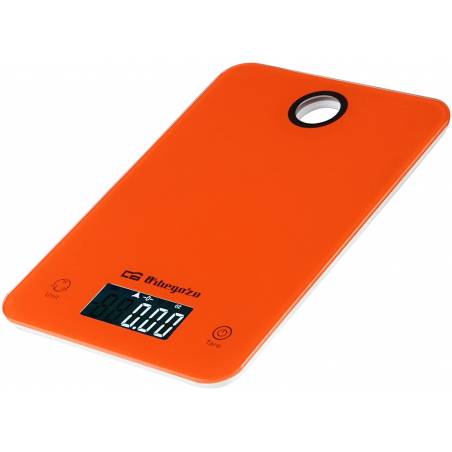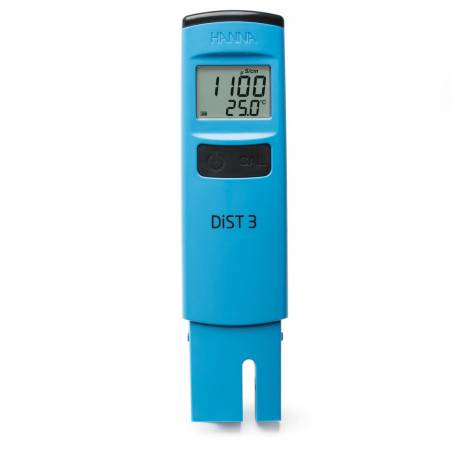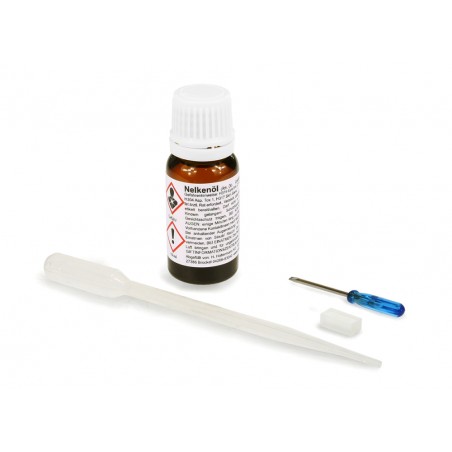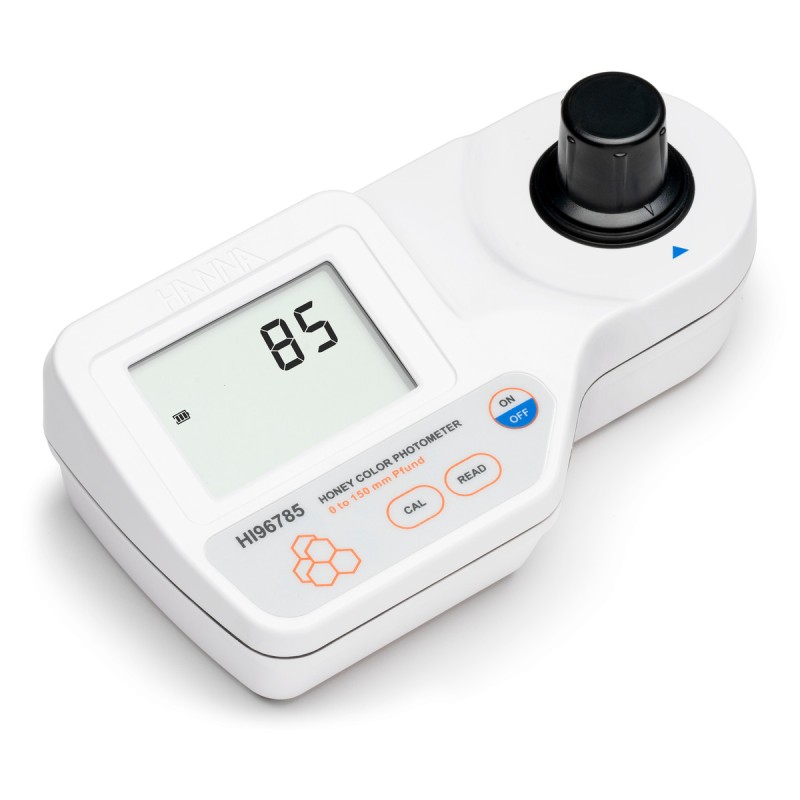




Honey Color Portable Photometer is used to measure the transmittance of light in order to determine the color of honey.
• Measurement Range: 0 to 150 mm Pfund.
• Resolution: 1 mm Pfund.
• Simple Operation: Place the honey in the device and press the button. You will get the result in a few seconds.
• Calibration and Adjustment: The equipment is user-calibratable and adjustable to ensure precision in every measurement.
• Ergonomic and Portable Design: Combines precision and ease of use, ideal for both laboratory and field use.
Includes:
• 5 measurement cuvettes with lids.
• Light protection cover.
• Bottle of glycerol (30 ml).
• Batteries.
• Detailed instructions.
Applications and Benefits:
The digital colorimeter is essential for the evaluation of monofloral honeys in buying and selling operations, ensuring that the color of the honey is within the commercially accepted range according to its botanical origin. Natural honey presents a wide range of colors depending on the flowers from which it originates. This device allows verifying that the honey labeled as monofloral complies with the organoleptic, physicochemical, and microscopic characteristics specified by the Honey Standard, ensuring transparency and confidence in the product labeling.
Importance of Honey Color:
The color of honey is a critical factor linked to its botanical origin. Honeys from acacia or orange blossom, for example, are expected to be extremely clear, while honeys from heather or oak honeydew are darker. This photometer ensures that monofloral honeys are correctly labeled, providing confidence to both producers and consumers.
The Hanna® Honey Color Photometer is an indispensable tool for beekeepers and laboratories seeking precision and efficiency in evaluating honey color, facilitating compliance with regulations and improving the quality of the final product.
TABLE
| Honey Origin | Electrical Conductivity (µS/cm) | Color (mm Pfund) |
| Acacia (Robinia pseudoacacia) | Less than 300 | Less than 35 |
| Avocado (Persea ssp) | More than 800 | More than 80 |
| White broom (Anthyllis cytisoides) | Less than 300 | Less than 40 |
| Alfalfa (Medicago sativa) | Less than 300 | Less than 35 |
| Almond (Prunus amygdalus) | Less than 25 | Less than 30 |
| Forest (Mixed honeydew and floral honey) | 700 to 900 | More than 90 |
| Heather (Calluna vulgaris) | More than 600 | More than 70 |
| Heathers (Erica ssp) | More than 600 | Between 49 and 114 |
| Spanish Lavender (Lavandula stoechas) | Less than 500 | More than 50 |
| Chestnut (Castanea sativa) | More than 800 | More than 70 |
| Viper's bugloss (Echium ssp) | Less than 500 | Less than 48 |
| Lavender (Lavandula vera, L. latifolia) | Less than 300 | Between 30 and 84 |
| Eucalyptus (Eucalyptus ssp) | Less than 400 | Between 40 and 80 |
| Sunflower (Helianthus annuus) | Less than 45 | Between 30 and 48 |
| Lemon (orange blossom) (Citrus limonia) | Less than 300 | Less than 35 |
| Strawberry Tree (Arbutus unedo) | More than 600 | More than 80 |
| Cork oak, holm oak, or oak honeydew | More than 800 | More than 90 |
| Mountain (Multifloral from mountain scrub and forest) | Less than 800 | More than 80 |
| Orange and mandarin (orange blossom) (Citrus ssp) | Less than 300 | Less than 30 |
| Meadow (Multifloral from meadow, Fabaceae -Leguminosae-) | Less than 300 | Less than 48 |
| Broom (Lygos sphaerocarpa) | Less than 700 | More than 70 |
| Rosemary (Rosmarinus officinalis) | Less than 300 |
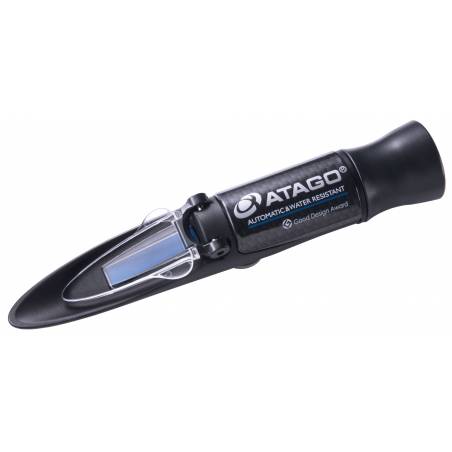

Honey Color Portable Photometer is used to measure the transmittance of light in order to determine the color of honey.
check_circle
check_circle


